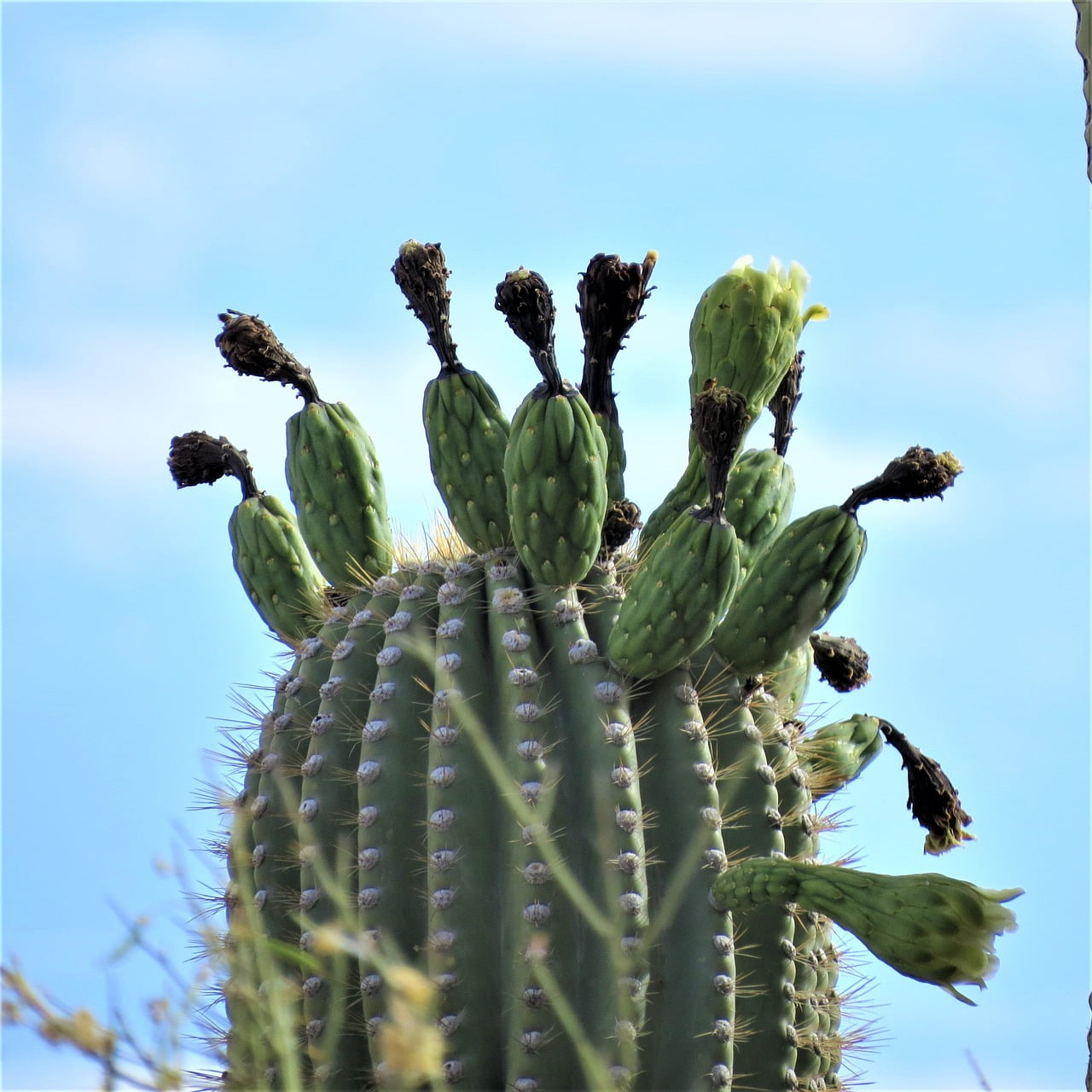
Saguaro Cactus and Planting: A Guide to Growing and Caring for These Majestic Desert Giants
Introduction
When it comes to iconic symbols of the desert Southwest, the majestic Saguaro cactus (Carnegiea gigantea) stands tall and proud. These impressive succulents, with their towering arms reaching for the sky, have captivated the imaginations of people for centuries. In this article, we will explore the art of planting and caring for Saguaro cacti, ensuring they thrive in your garden and become a stunning focal point for years to come.
1. Understanding the Saguaro Cactus
H1: The Anatomy of a Saguaro
The Saguaro cactus is renowned for its distinctive shape and appearance. They consist of a thick, ribbed stem and can grow to towering heights, sometimes reaching up to 60 feet. The arms, which develop as the cactus matures (typically after 50-100 years), branch out gracefully, giving the Saguaro its signature silhouette.
H2: The Natural Habitat
Saguaro cacti are native to the Sonoran Desert in the southwestern United States and northwestern Mexico. They thrive in arid environments, where they have adapted to withstand intense heat and limited water availability.
H3: Symbiotic Relationships
One of the fascinating aspects of Saguaro cacti is their mutually beneficial relationships with other desert dwellers. For instance, Gila woodpeckers create nesting holes in their stems, providing shelter to both the birds and the cacti.
2. Planting a Saguaro Cactus
H1: Choosing the Right Location
Selecting the perfect spot for your Saguaro cactus is crucial. It requires full sunlight to flourish, so find an area in your garden that receives at least 12 hours of direct sunlight each day.
H2: Soil Requirements
Well-draining soil is essential for the Saguaro’s survival. Sandy or gravelly soils are ideal, as they prevent water from pooling around the roots.
H2: Getting the Timing Right
The best time to plant a Saguaro cactus is in the early spring when the soil is warm, but temperatures are not scorching yet. This allows the plant to establish its root system before the intense heat of summer.
3. Caring for Your Saguaro Cactus
H1: Watering Needs
While Saguaro cacti are adapted to arid conditions, they still require water to thrive. Young cacti need more frequent watering, while older, established plants can survive on natural rainfall alone.
H2: Providing Shade
Young Saguaro cacti are susceptible to sunburn, so providing temporary shade during the hottest part of the day is beneficial until they develop their iconic arms.
H2: Pruning and Maintenance
Pruning is generally unnecessary for Saguaro cacti, but you should regularly inspect your plant for signs of damage or disease and remove any dead or damaged sections.
Conclusion
The Saguaro cactus is a true marvel of nature, a symbol of resilience in the harsh desert landscape. By understanding its unique characteristics and following the proper planting and care guidelines, you can successfully cultivate and enjoy the beauty of these majestic desert giants in your own garden.
FAQs (Frequently Asked Questions)
Q1: Can I grow a Saguaro cactus indoors?
While it’s possible to grow a Saguaro cactus indoors, it’s not recommended. These cacti need abundant sunlight and space to thrive.
Q2: How fast does a Saguaro cactus grow?
Saguaro cacti are slow growers, especially in their early years. It can take decades before they develop their characteristic arms.
Q3: Are Saguaro cacti endangered?
Yes, Saguaro cacti are protected by law in their native habitats and are listed as a species of concern due to threats like habitat loss and illegal poaching.
Q4: Do Saguaro cacti bloom?
Yes, Saguaro cacti produce beautiful white flowers, typically in late spring and early summer.
Q5: How long do Saguaro cacti live?
Saguaro cacti can live for more than 150 years, and some have been known to survive for over 200 years.